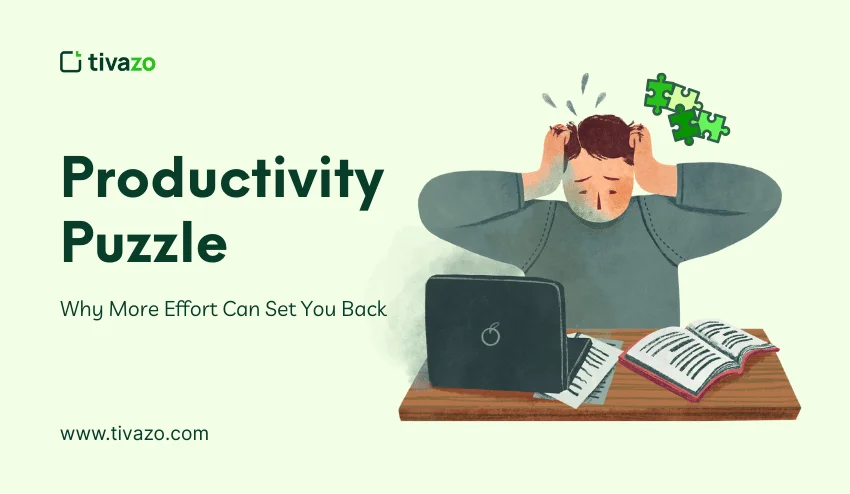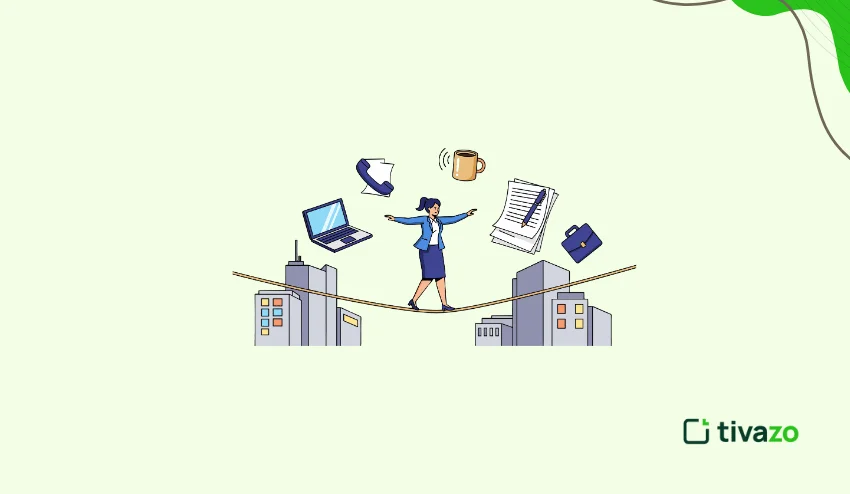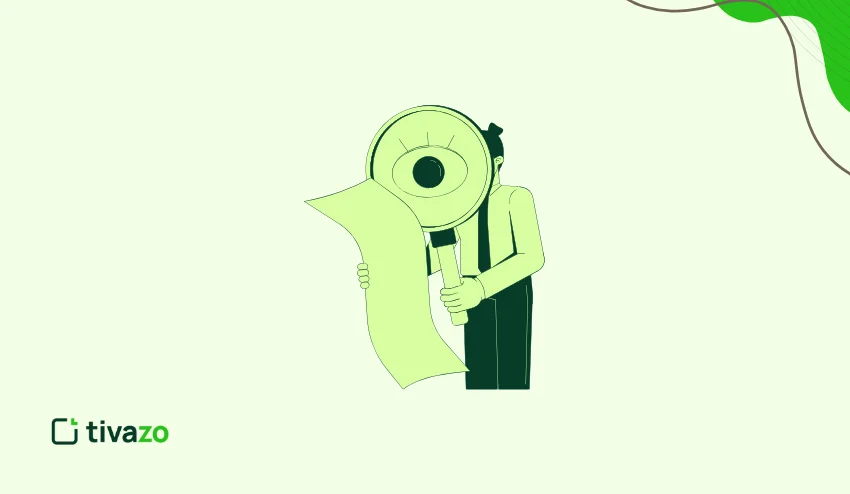People often hear that hard work leads straight to success. Still, many offices hold tired staff who stay late, reply at midnight, and remain behind. That daily scene shows the productivity puzzle, the odd fact that extra hours do not always bring better results. Packed calendars drain ideas, raise errors, and turn promises into rushed slips. Many students face the same trap when they pull all-nighters for tasks instead of using a service where you can pay for math homework for a fee, then use the saved time to study well.
Seeing why added effort can backfire is the first step toward change. The guide below explains attention, willpower limits, and the role rest plays in peak output. By the end, you may see that real productivity means using energy with care, not simply working longer.
Grasping the Productivity Puzzle
Many assume more time on a task yields a larger result, but evidence disagrees. Economists saw the productivity puzzle in factories during the 1970s, as hours rose while output per worker flattened. Later, researchers found the same curve in knowledge work. After about forty focused hours each week, performance plateaus, then declines.
The brain uses about twenty percent of the body’s energy even while resting, and that fuel burns faster during deep focus. As glucose drops, attention wanders, choices slow, and mistakes multiply.
People often respond by sitting longer at their desks, which tightens a loop of fatigue and lower output. This mismatch between effort and result shows that efficiency is not simple arithmetic. Biological and psychological limits cap returns on time invested. Respecting those limits helps teams arrange schedules that support, rather than undercut, strong work each day.
The Myth of Endless Grind
Culture admires stories about founders who live on four hours of sleep, yet those tales reflect selective memory. Studies of prize-winning scientists, elite athletes, and top programmers show they rarely exceed five deeply engaged hours per day. Past that point, output becomes hard work without the hyphen, effort that looks intense but delivers thin value. Chronic overwork lifts cortisol, weakens immune response, and can shrink parts of the prefrontal cortex across time.
That biological toll shows up as messy code, shaky decisions, and conflicts that later need repair. Schedules are also spread by example. When one person stays the latest, peers copy the pattern, and burnout moves through the group like a cold. In contrast, teams that cap days, take breaks, and track goals with care often beat grind-or-die rivals. The myth survives because costs arrive late, but the science is clear. Sustained excellence requires firm limits, not endless hours.
Energy, Attention, and Mental Limits
Productivity depends less on the clock and more on energy cycles. Human brains run in ninety-minute ultradian rhythms that switch between high alertness and natural dips. Pushing through a low phase may feel possible, yet tests show steep drops in recall and problem-solving. When someone checks social media during those dips, it is not only weak will. The brain is seeking a fast dopamine spark to stay alert. Each switch leaves attention residue that lingers for up to twenty minutes and slows the main task.
Multiply that residue across many context shifts, and an eight-hour schedule shrinks into a few truly creative hours. Knowing those limits allows people to schedule demanding work during peaks, such as designing a course plan or debugging tricky code. Routine email, forms, and filing can fill the dips. Respecting natural rhythms turns the same hours into higher-quality output.
4 Ways Effort Can Set You Back in the Productivity Puzzle
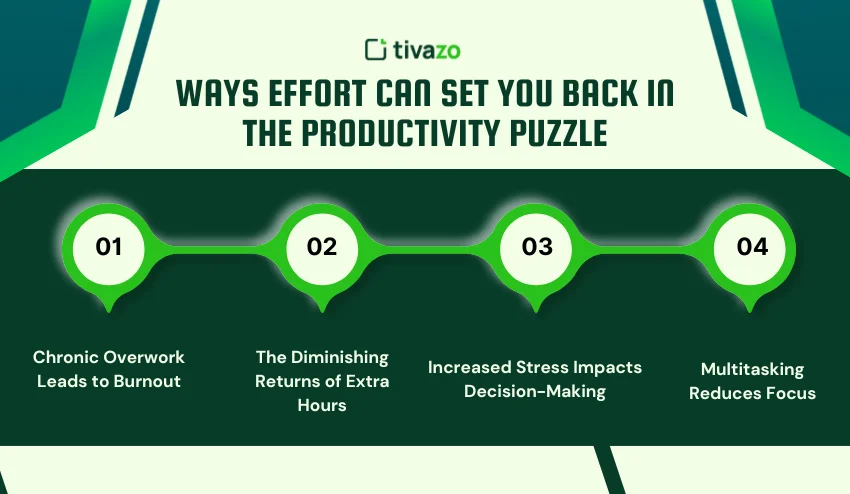
1. Chronic Overwork Leads to Burnout
When you continuously push yourself to work long hours without rest, you build physical and mental fatigue. Eventually, burnout can occur, when your body is depleted of its energy supplies, and you struggle to focus, stay productive, or feel motivated. The longer you are in this chronic state of fatigue, the greater the consequences on your well-being, productivity, and even health, including increased absenteeism and decreased job satisfaction.
2. The Diminishing Returns of Extra Hours
Initially, working longer hours may seem productive, but research shows that after about 40 hours a week, your performance plateaus or even declines. The more you work, the less effective you become as mental fatigue sets in. As glucose levels decrease in the brain, attention span shortens, decision-making slows, and mistakes multiply. This means that working overtime often results in wasted effort and subpar output.
3. Increased Stress Impacts Decision-Making
Continuous work without adequate rest can lead to high levels of stress. Stress impacts your cognitive abilities, especially decision-making. Under stress, your brain becomes less capable of analyzing information clearly, which leads to poor judgments, rushed decisions, and mistakes. This can slow progress and lead to setbacks, even though you’re putting in more effort.
4. Multitasking Reduces Focus
Trying to juggle multiple tasks at once may seem efficient, but in reality, it reduces your ability to focus. Each time you switch between tasks, your brain needs time to refocus, which leads to lost time and reduced productivity. This mental “residue” from task-switching lowers the quality of your work, making it harder to achieve meaningful results.
Quality Versus Quantity in Work
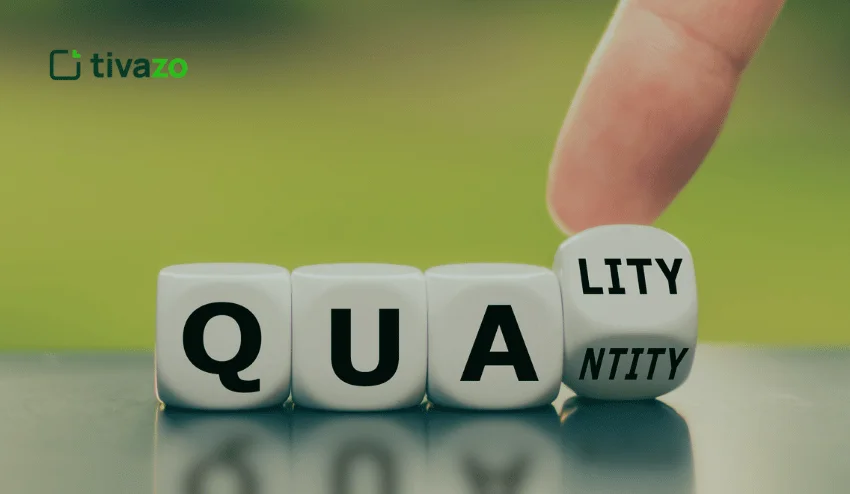
Longer schedules mislead because people often count deliverables instead of value. A designer can pump out ten mediocre logo drafts in one night, while one strong, well-researched concept may earn far greater trust. Research at Microsoft showed that programmers who wrote fewer lines but focused on sound architecture cut later bug fixes by forty percent. In manufacturing, Toyota’s Andon Cord lets workers stop the line when something feels off, and that pause can save millions in recalls.
These examples show the risk of equating motion with progress. High performers slow down to test assumptions, request feedback, and refine the final product. Their calendars look lighter, yet their impact grows heavier. When reviews include measures like error rate, client satisfaction, learning gained, or social effect, people favor thoughtful creation over sheer volume. Shifting metrics breaks the illusion that quantity alone drives real progress.
Tools, Tech, and Automation
Digital tools can save time, yet they also tempt people into shallow busyness. A packed project board or nonstop chat pings split attention as much as a noisy office. The fix is chosen automation, not a pile of apps. An email rule that routes newsletters into a weekly digest removes dozens of tiny choices. Marketers who schedule routine posts free hours for real analysis and smart tweaks.
A text expander reclaims minutes that build into days each quarter. Still, every setup needs audits. If a tool floods people with alerts or repeats data entry, it harms more than it helps. Training matters too. Software cannot aid users who ignore its best practices. When tech matches needs and is tuned with care, it works like an invisible teammate. It handles repeatable tasks in the background while people focus on creative, high-value challenges.
Building Genuine Connections
Personal habits matter, yet strong networks often boost productivity faster. Research on social capital shows that diverse ties help people solve problems quickly by tapping specialized knowledge. There is a catch. Relationships must be real, not grabby or fake. Try-hard connections show up only when they want favors, which drains energy and trust. Healthy collaboration moves the other way, giving help first and asking later.
Leaders can grow sturdy ties by pairing senior and junior staff on short learning sprints, rotating meeting hosts, and celebrating wins that cross departments. Digital spaces help too. A moderated chat channel can surface answers in minutes that would cost hours alone. With mutual respect and steady curiosity, teams replace scattered interruptions with quick, well-aimed exchanges. Strong ties work like an external memory bank. Everyone gets more done without always doing more.
Smart Plans and Real Rest
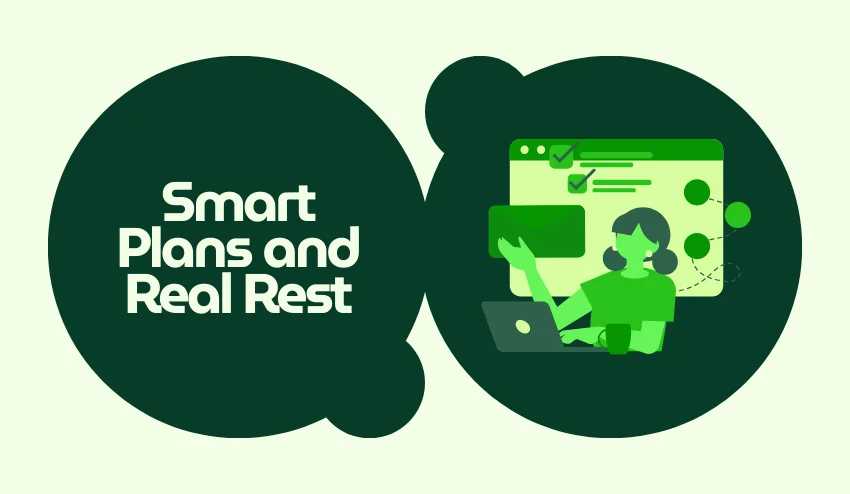
Willpower fades during the day, so planning acts like a quiet force multiplier. Many high achievers use a two-hour block method. They group deep work into early morning or calm midafternoon windows, mute alerts, and treat the block as a meeting with themselves. After each block, a short break, such as a five-minute walk or brief breathing drill, resets the nervous system. Findings from the Draugiem Group showed that people following a 52/17 pattern outperformed peers by sixteen percent. Sleep also deserves care.
A single night of six hours instead of eight can slow cognition to the level of a legally drunk driver. Sound sleep consolidates memory, rebuilds tissues, shapes hormones, and fuels the insight behind breakthrough ideas. When teams protect rest with no-meeting Fridays, firm vacations, and quiet rooms, core metrics often improve. Strategic pauses are not lazy. They ensure performance and make excellence repeatable.
Success Without the Productivity Puzzle
Bring these lessons together, and a clear path appears. Start by defining outcomes, not hours. Success is a finished article, a satisfied customer, or a solved equation, not time spent staring at a screen. Match tasks to energy peaks, and protect those slots for creative thinking. Treat rest as a skill that supports performance, and schedule breaks and sleep with the same seriousness as meetings.
Use tools to remove drudge work, and audit systems so alerts stay tame. Grow relationships that allow fast advice, honest feedback, and fair credit. Finally, track quality measures, such as error rates and learning gained, so effort aligns with meaning. When these pieces fit, hard work becomes smart work. People achieve more, feel better, and still have time for life beyond the office. That is a modern picture of success.
Turning Ideas Into Daily Practice
Ideas matter only when they appear on the calendar, so put lessons into motion. Begin with a one-week time audit. Log tasks in fifteen-minute chunks to see where attention leaks away. Mark high-flow spans, and place next week’s most important project inside those windows. Set micro-goals that fit ninety-minute blocks. Finishing a prototype outline beats the vague note “work on prototype.” Build buffers too.
A ten-minute pause between meetings lowers mental residue and gives space for quick notes. Each Friday, review outcomes against goals and capture wins and obstacles. Treat the review as data for the next set of trials. Share findings with a colleague circle or a small mastermind group. Light accountability helps new habits stick and brings fresh ideas. Over time, these small, steady changes stack up. When organizations handle hybrid work effectively, the productivity puzzle becomes a competitive edge, and employees experience more focus and satisfaction.
Conclusion
Embracing the productivity puzzle means recognizing that success doesn’t arise from working longer hours, but from working longer and smarter. Through task alignment that respects cycles of energy, periodic rest, and focusing on quality over quantity, organizations can increase the innovation potential. When effort, tools, and collaboration become the dynamic balance of sustainable performance and stewardship, we will be more likely to get the outcomes we all desire, and with collective effort and intention, we encourage a shift in how we measure “success” in the workplace of today.
